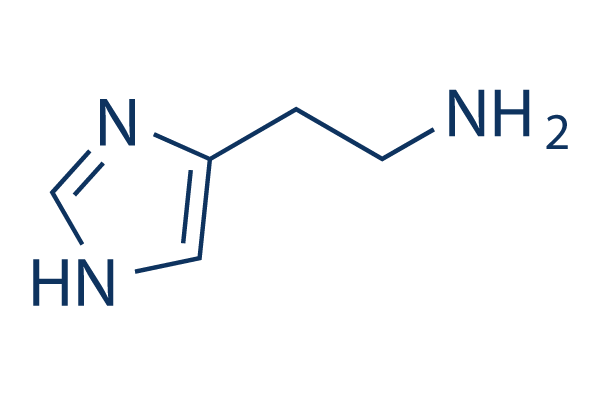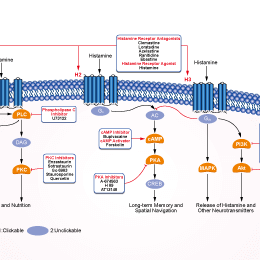
- Bioactive Compounds
- By Signaling Pathways
- PI3K/Akt/mTOR
- Epigenetics
- Methylation
- Immunology & Inflammation
- Protein Tyrosine Kinase
- Angiogenesis
- Apoptosis
- Autophagy
- ER stress & UPR
- JAK/STAT
- MAPK
- Cytoskeletal Signaling
- Cell Cycle
- TGF-beta/Smad
- DNA Damage/DNA Repair
- Compound Libraries
- Popular Compound Libraries
- Customize Library
- Clinical and FDA-approved Related
- Bioactive Compound Libraries
- Inhibitor Related
- Natural Product Related
- Metabolism Related
- Cell Death Related
- By Signaling Pathway
- By Disease
- Anti-infection and Antiviral Related
- Neuronal and Immunology Related
- Fragment and Covalent Related
- FDA-approved Drug Library
- FDA-approved & Passed Phase I Drug Library
- Preclinical/Clinical Compound Library
- Bioactive Compound Library-I
- Bioactive Compound Library-Ⅱ
- Kinase Inhibitor Library
- Express-Pick Library
- Natural Product Library
- Human Endogenous Metabolite Compound Library
- Alkaloid Compound LibraryNew
- Angiogenesis Related compound Library
- Anti-Aging Compound Library
- Anti-alzheimer Disease Compound Library
- Antibiotics compound Library
- Anti-cancer Compound Library
- Anti-cancer Compound Library-Ⅱ
- Anti-cancer Metabolism Compound Library
- Anti-Cardiovascular Disease Compound Library
- Anti-diabetic Compound Library
- Anti-infection Compound Library
- Antioxidant Compound Library
- Anti-parasitic Compound Library
- Antiviral Compound Library
- Apoptosis Compound Library
- Autophagy Compound Library
- Calcium Channel Blocker LibraryNew
- Cambridge Cancer Compound Library
- Carbohydrate Metabolism Compound LibraryNew
- Cell Cycle compound library
- CNS-Penetrant Compound Library
- Covalent Inhibitor Library
- Cytokine Inhibitor LibraryNew
- Cytoskeletal Signaling Pathway Compound Library
- DNA Damage/DNA Repair compound Library
- Drug-like Compound Library
- Endoplasmic Reticulum Stress Compound Library
- Epigenetics Compound Library
- Exosome Secretion Related Compound LibraryNew
- FDA-approved Anticancer Drug LibraryNew
- Ferroptosis Compound Library
- Flavonoid Compound Library
- Fragment Library
- Glutamine Metabolism Compound Library
- Glycolysis Compound Library
- GPCR Compound Library
- Gut Microbial Metabolite Library
- HIF-1 Signaling Pathway Compound Library
- Highly Selective Inhibitor Library
- Histone modification compound library
- HTS Library for Drug Discovery
- Human Hormone Related Compound LibraryNew
- Human Transcription Factor Compound LibraryNew
- Immunology/Inflammation Compound Library
- Inhibitor Library
- Ion Channel Ligand Library
- JAK/STAT compound library
- Lipid Metabolism Compound LibraryNew
- Macrocyclic Compound Library
- MAPK Inhibitor Library
- Medicine Food Homology Compound Library
- Metabolism Compound Library
- Methylation Compound Library
- Mouse Metabolite Compound LibraryNew
- Natural Organic Compound Library
- Neuronal Signaling Compound Library
- NF-κB Signaling Compound Library
- Nucleoside Analogue Library
- Obesity Compound Library
- Oxidative Stress Compound LibraryNew
- Plant Extract Library
- Phenotypic Screening Library
- PI3K/Akt Inhibitor Library
- Protease Inhibitor Library
- Protein-protein Interaction Inhibitor Library
- Pyroptosis Compound Library
- Small Molecule Immuno-Oncology Compound Library
- Mitochondria-Targeted Compound LibraryNew
- Stem Cell Differentiation Compound LibraryNew
- Stem Cell Signaling Compound Library
- Natural Phenol Compound LibraryNew
- Natural Terpenoid Compound LibraryNew
- TGF-beta/Smad compound library
- Traditional Chinese Medicine Library
- Tyrosine Kinase Inhibitor Library
- Ubiquitination Compound Library
-
Cherry Picking
You can personalize your library with chemicals from within Selleck's inventory. Build the right library for your research endeavors by choosing from compounds in all of our available libraries.
Please contact us at info@selleckchem.com to customize your library.
You could select:
- Antibodies
- Bioreagents
- qPCR
- 2x SYBR Green qPCR Master Mix
- 2x SYBR Green qPCR Master Mix(Low ROX)
- 2x SYBR Green qPCR Master Mix(High ROX)
- Protein Assay
- Protein A/G Magnetic Beads for IP
- Anti-Flag magnetic beads
- Anti-Flag Affinity Gel
- Anti-Myc magnetic beads
- Anti-HA magnetic beads
- Poly DYKDDDDK Tag Peptide lyophilized powder
- Protease Inhibitor Cocktail
- Protease Inhibitor Cocktail (EDTA-Free, 100X in DMSO)
- Phosphatase Inhibitor Cocktail (2 Tubes, 100X)
- Cell Biology
- Cell Counting Kit-8 (CCK-8)
- Animal Experiment
- Mouse Direct PCR Kit (For Genotyping)
- New Products
- Contact Us
research use only
Histamine Histamine Receptor agonist
Histamine, an organic nitrogenous compound, is involved in local immune responses regulating physiological function in the gut and acting as a neurotransmitter for the brain, spinal cord, and uterus. It is a potent H1 and H2 receptor agonist. This compound can be used to induce animal models of Gastric and Intestinal Ulcers.

Chemical Structure
Molecular Weight: 111.15
Purity & Quality Control
Batch:
Purity:
99.99%
99.99
Related Products
| Related Targets | H1 receptor H2 receptor H3 receptor H4 receptor | Click to Expand |
|---|---|---|
| Related Products | GSK2879552 2HCl JNJ-7777120 Mianserin HCl Ebastine Ciproxifan Maleate | Click to Expand |
| Related Compound Libraries | Kinase Inhibitor Library FDA-approved Drug Library Natural Product Library Bioactive Compound Library-I Highly Selective Inhibitor Library | Click to Expand |
Signaling Pathway
Mechanism of Action
In vitro |
||||
| In vitro | Histamine stimulates the proliferation of human articular chondrocytes in culture. This compound is reported to modify the behaviour of many cell types in vitro, including chondrocytes, fibroblasts, macrophages, epithelial cells, endothelial cells, and T cells. It also modulates the production of many cytokines and the expression of their receptors. This chemical regulates cellular processes through the expression of its receptors. It stimulates the production of matrix metalloproteinases (MMPs)-13 and -3 (collagenase 3 and stromelysin-1, respectively) by histidine decarboxylase (HAC) in vitro[1]. | |||
|---|---|---|---|---|
| Cell Research | Cell lines | human articular chondrocytes | ||
| Concentrations | 1-100 μmol/l | |||
| Incubation Time | 6 days | |||
| Method | Cells are grown to confluence in 80 cm2 culture flasks in Dulbecco's modified Eagle's medium (DMEM) + 10% fetal calf serum (FCS). At first or second passage, cells are seeded into 96 well culture plates, at densities of approximately 2×103 cells/well. After 24 hours the cells are treated with either DMEM +2% FCS alone (control), or DMEM + 2% FCS plus this compound range 1-100 μmol/l (minimum of eight wells for each treatment). The medium with or without this chemical is replenished every 48 hours, and after six days cell growth is estimated. | |||
In Vivo |
||
| In vivo | Histamine has a recognised role in allergic and inflammatory reactions and is an important modulator of numerous physiological processes, including cell proliferation, angiogenesis, and vasopermeability[1]. This compound dilates vasculature, increases blood flow, while it induces hyperpermeability in venula. It disrupts endothelial barrier formation of venula indicated by changes in vascular endothelial cadherin (VE-cadherin) localization at endothelial cell junction[3]. | |
|---|---|---|
| Animal Research | Animal Models | New Zealand adult healthy albino rabbits |
| Dosages | 50, 100, 200 μg/kg | |
| Administration | s.c. | |
| NCT Number | Recruitment | Conditions | Sponsor/Collaborators | Start Date | Phases |
|---|---|---|---|---|---|
| NCT06281366 | Recruiting | Pregnancy Complications |
Hospital Universitari Vall d''Hebron Research Institute|DR Healthcare |
February 16 2024 | -- |
| NCT05216133 | Enrolling by invitation | Airway Disease|Barrett Esophagus|Gastroesophageal Reflux Disease |
NYU Langone Health|National Institute for Occupational Safety and Health (NIOSH/CDC) |
March 22 2023 | -- |
| NCT05701826 | Completed | Skeletal Muscle Relaxation |
Fujian Shengdi Pharmaceutical Co. Ltd. |
February 15 2023 | Phase 1 |
| NCT05676346 | Completed | Lower Urinary Tract Symptoms|Histamine Intolerance |
Complexo Hospitalario Universitario de A Coruña |
October 11 2022 | -- |
References |
|
Chemical Information
| Molecular Weight | 111.15 | Formula | C5H9N3 |
| CAS No. | 51-45-6 | SDF | Download SDF |
| Synonyms | N/A | ||
Storage and Stability
| Storage (From the date of receipt) | |||
|
In vitro |
DMSO : 22 mg/mL ( (197.93 mM) Moisture-absorbing DMSO reduces solubility. Please use fresh DMSO.) Water : 22 mg/mL Ethanol : 22 mg/mL |
Molecular Weight Calculator |
|
In vivo Add solvents to the product individually and in order. |
In vivo Formulation Calculator |
|||||
Preparing Stock Solutions
Molarity Calculator
In vivo Formulation Calculator (Clear solution)
Step 1: Enter information below (Recommended: An additional animal making an allowance for loss during the experiment)
mg/kg
g
μL
Step 2: Enter the in vivo formulation (This is only the calculator, not formulation. Please contact us first if there is no in vivo formulation at the solubility Section.)
% DMSO
%
% Tween 80
% ddH2O
%DMSO
%
Calculation results:
Working concentration: mg/ml;
Method for preparing DMSO master liquid: mg drug pre-dissolved in μL DMSO ( Master liquid concentration mg/mL, Please contact us first if the concentration exceeds the DMSO solubility of the batch of drug. )
Method for preparing in vivo formulation: Take μL DMSO master liquid, next addμL PEG300, mix and clarify, next addμL Tween 80, mix and clarify, next add μL ddH2O, mix and clarify.
Method for preparing in vivo formulation: Take μL DMSO master liquid, next add μL Corn oil, mix and clarify.
Note: 1. Please make sure the liquid is clear before adding the next solvent.
2. Be sure to add the solvent(s) in order. You must ensure that the solution obtained, in the previous addition, is a clear solution before proceeding to add the next solvent. Physical methods such
as vortex, ultrasound or hot water bath can be used to aid dissolving.
Tech Support
Answers to questions you may have can be found in the inhibitor handling instructions. Topics include how to prepare stock solutions, how to store inhibitors, and issues that need special attention for cell-based assays and animal experiments.
Tel: +1-832-582-8158 Ext:3
If you have any other enquiries, please leave a message.
* Indicates a Required Field






































